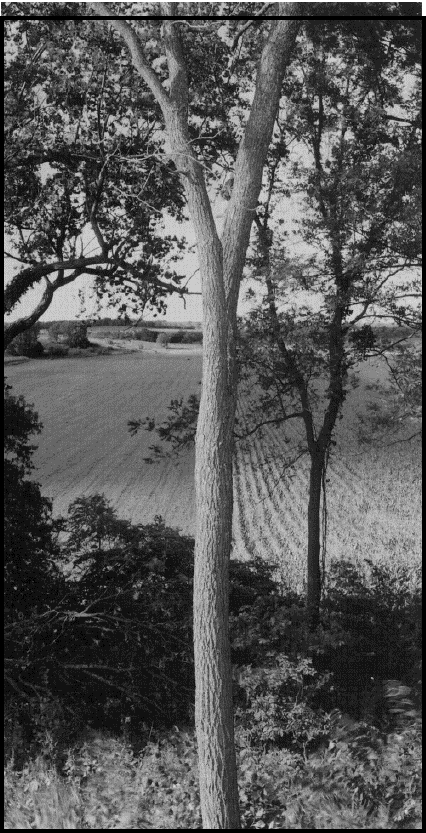Wild Edges:
Photographic Ink Prints
Gregory Conniff
(University of Wisconsin)

Conniff grew up in New Jersey before it was taken over by freeways and suburbs. Thirty years ago, he moved to the farmland of the Middle West. He prides himself on his affection for nature and the "wild edges." His editors compare him to Claude Lorrain.
In his long, some might say overlong introduction, he recalls an unspoilt New Jersey, but when I think back on my train heading for the Hudson and Penn station, before the blackness of the dripping tunnel all I can remember are warehouses, metal fences, corrugated steel sheds, storage tanks, blocks, bridges, general drudge, and what we used to call "high-tension" lines.
"Whether or not the place we live inspires affection, we are nevertheless influenced by its physical nature, our evolved responses bathing our minds in their own reactive chemistry," Conniff writes: "I believe there is an internal mechanism that sweetens our living in that place." There are fifty or so black-and-white photographs here of trees, stumps, desiccated vines, plowed fields, corn-stalks, telephone poles, and what we in the southwest call "monte." The accompanying text may drive you wild, depending on --- as the author has it --- whether you are, or are not, wired. This appears across from a shot of a post with bird-house: "Suppose we were to ignore the American romance of a new Eden and simply love this imperfect world being itself --- love it as if we truly loved ourselves as part of it." This, across from a spidery, ivy-tormented pole: "Where we are, most of us, most of the time, is home. The character of home is made of many things, one of which is local beauty, either natural or built."
As my dear abuelita would say, ¿Cómo?
--- C. A. Amantea
